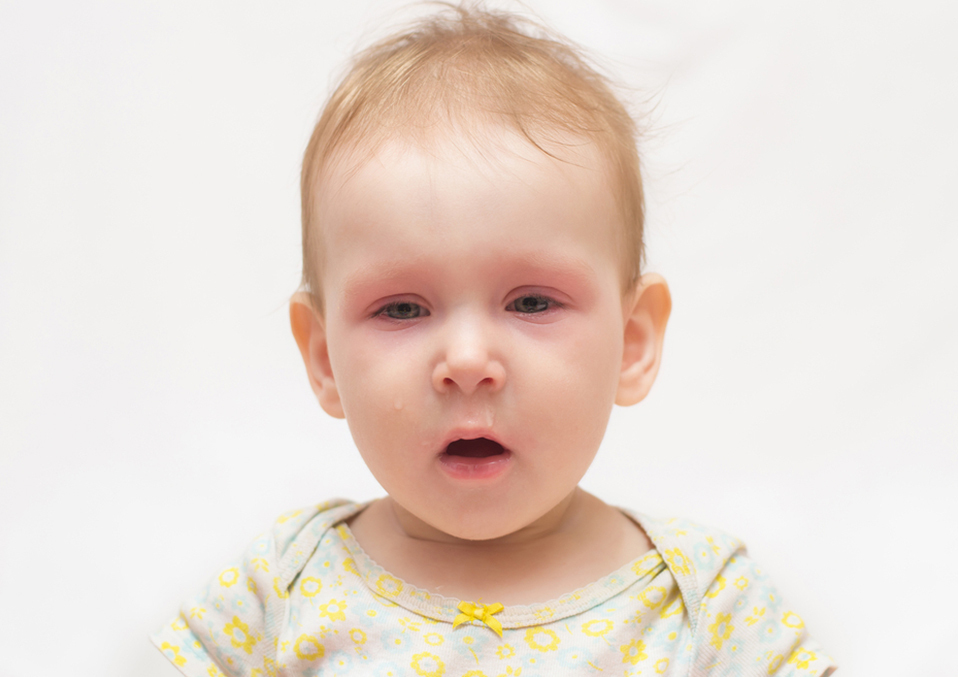Retinoblastoma is an eye disease. It’s a rare cancer of the retina. It develops in young children, usually, before they are 5 years old.
Retinoblastoma, What Is It?
Definition Of Retinoblastoma:
Retinoblastoma is a type of eye cancer that affects young children (usually under five years of age).
This type of cancer is rare and can be treated in its entirety (in 95% of cases) when it is treated as soon as possible.
Retinoblastoma can affect one or both eyes. The diagnosis is usually effective before the age of one of the disease affects both eyes. In the case of a single eye; it may be slightly later (between 1 and 2 years).
This form of cancer affects the retina, the part of the eye that is sensitive to light and that allows color detection.
The most atypical signs of the pathology are defined by bleaching of the pupil of the eye, usually called “reflex of the cat’s eyes”.
This whitening of the pupil is particularly remarkable when taking a picture with a flash. Other signs are also associated with this type of cancer: strabismus, eye pain, eye irritation; or disorders, and/or loss of vision.
Rapid diagnosis and effective management can restore these effects of cancer.
On the other hand; late treatment can cause cancer to spread to other parts of the body and can be more serious or even harmful.
In the case of a type of cancer, this pathology may be the result of genetic mutation(s) in certain cells of the body. Individuals with genetic abnormalities of this type are particularly more at risk of developing other cancer
Causes Of Retinoblastoma:
During the early stages of Toddler Development, retinal cells are also developing. This growth is slow and a halt to it can be identified. In the latter case; retinoblastoma appears.
In 40 % of retinoblastoma cases; this is an anomaly in genes coding for retinal development. This mutated gene can then come from a parent (heredity) or can be modified during the development of the fetus spontaneously (genetic mutation). The gene responsible for the disease is the RB1 gene.
The latter plays an important role in cell division, especially of eye cells. A mutation of this gene can then cause the cells in the retina to grow too fast; anarchically and uncontrollably. These abnormally demultiplied cells then form a malignant tumor (causing cancer).
However, the remaining 60 % of retinoblastoma cases are not related to a specific and identified cause.
Who Is Affected By Retinoblastoma:
 Retinoblastoma is a unique and rare type of retinal cancer affecting young children (usually under five years of age)
Retinoblastoma is a unique and rare type of retinal cancer affecting young children (usually under five years of age)
Possible Evolution and complications of retinoblastoma
Retinoblastoma is cancer that; when diagnosed and managed quickly and effectively, is treated very well
On the other hand, delayed management of this type of cancer can lead to other complications; including the spread of cancer to other parts of the body.
Read Also:
Retinoblastoma Symptoms And Treatments:
Symptoms Of Retinoblastoma:
The signs and symptoms of this type of cancer are defined by :
- retinal whitening, particularly visible in a photo taken with a flash.
- a sudden change in the color of the iris.
- inflammation of the eye; causing redness and tingling.
- vision problems or even vision loss.
If your toddler has these symptoms, then it is advisable to consult your doctor as soon as possible.
In very rare cases; the disease may develop at a later age. In this case; the symptoms are particularly defined by swelling in the eyes; loss of vision and eye damage (red and irritable eyes).
Hazard Factors For Retinoblastoma:
Retinoblastoma is a form of cancer that affects the retina of the eye. Its development is the result of genetic abnormalities, in 40% of cases.
The gene in question; and implicated in this pathology; is the RB1 gene. Genetic abnormalities on this gene may originate from the parents (heredity) or may occur as part of fetal development (genetic mutation).
In Case Of Diagnostic Delay :
If the disease is not diagnosed as strabismus or leukocoria, other symptoms may appear. They tend to show more advanced and more severe forms that require heavier treatments.
Buphthalmia is an increase in the volume of the eyeball due to the distension of the sclera due to pressure exerted by the tumor. The eyeball appears larger with an increase in corneal diameter and sometimes a bluish aspect of the thinned sclera.
In other cases; the tumor may be accompanied by inflammatory reactions in the eye and sometimes even the orbit with swelling, redness, and pain.
A Change In Eye Color Is Sometimes Noted:

Finally, in the absence of a diagnosis, we may have to deal with advanced forms that are currently much more common in developing countries.
In this case; the tumor invades nearby orbital tissues causing exophthalmia in an inflammatory and painful context.
Overall, the early diagnosis of retinoblastoma is based on a better understanding of the signs of retinoblastoma such as strabismus and leukocoria.
Taking these abnormalities into account quickly helps to preserve the eye and vision, and of course to avoid jeopardizing the vital prognosis of the eye.
Diagnosing And Treating Retinoblastoma:
Once the signs and symptoms associated with this type of cancer have been identified; prompt consultation with the doctor is necessary. He will perform a “reflex” test using red light in a dark room.
Through an analysis of the reflection of light, the doctor can then diagnose the possible presence of cancer. As part of the diagnosis of retinoblastoma; the toddler is then referred to a specialist for further examination.
An ultrasound may be effective in diagnosing retinoblastoma.
Treatment of the disease is then directly associated. Chemotherapy may also be prescribed.
Drug management depends on the stage of disease progression, and can be intraocular (when cancer is extensively developed within the eye) or extraocular (as part of the development of cancer in the periphery of the eye tissue).
In 95% of cases; retinoblastoma is detected and managed quickly, enabling rapid and complete recovery.
In the rarest cases of cancer spread; treatment is then much more difficult.
For the treatment of small local tumors, the use of a laser can be a solution, or cryotherapy (cold therapy). Both procedures are performed by general anesthesia of the toddler.
As part of a larger tumor, radiotherapy can be a solution (therapy using radioactivity). Or chemotherapy; widely used in the treatment of cancer. Finally, surgery can be a solution in the most extreme cases.
Read Also:
- The Important Tips For Toddler Discipline.
- The Most Common Reasons For Babies Cry.
- How to stop a toddler from biting nails?


